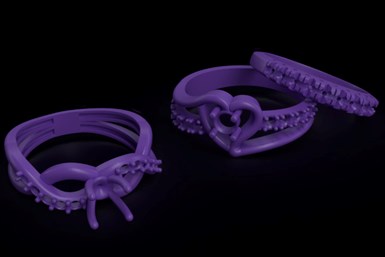PostProcess Solution for Automated Wax Support Removal
The PLM-601-SUB detergent is said to enable automated wax support removal on even the most intricate and delicate build parts.

Photo Credit: PostProcess Technologies
PostProcess Technologies has developed a solution for wax support removal as a part of its offering of automated and intelligent additive manufacturing (AM) postprocess solutions. After extensive development and testing, its PLM-601-SUB chemistry formulation enables wax support removal on even the most intricate and delicate build parts, the company says.
The detergent plays a significant role in the company’s Submersed Vortex Cavitation (SVC) technology, which is said to utilize software intelligence to ensure that 3D printed parts are uniformly, consistently and reliably exposed to detergent as they undergo postprinting for precision finished parts.
It is said 3D printed wax casting is widely adopted across many industries and is especially useful for luxury and jewelry makers due to its ability to make highly detailed patterns for lost wax casting. Due to the fragile nature and high breakage rate of these 3D printed parts, highly trained technicians are required, which can lead to overall low productivity.
Traditional wax support removal is said to require processing with IPA, which is typically time intensive with a multistep process, inconsistent and requires extensive manual labor with high technician attendance time. Safety concerns are associated with this form of support removal due to the necessity of heating the highly flammable IPA bath. The low longevity of IPA also has a negative impact on the environment due to the large amounts of waste generated.
The formulation of PLM-601-SUB detergent was developed specifically to solve these wax support removal concerns. The detergent has a flashpoint of 200°F (93°C) with low volatility and is said to have 2-3 times the longevity of other solvents. Large batches of small 3D printed parts can be processed in the DEMI family of solutions with software-controlled parameters, making the process safe and easy for operators. Full batches can be processed in approximately 30 minutes, significantly reducing the technician time typically required to remove wax from parts.
Related Content
-
Top 10 Additive Manufacturing Stories of 2023
Laser powder bed fusion, proprietary AM processes, machining and more made our list of top 10 articles and videos by pageviews this year.
-
Possibilities From Electroplating 3D Printed Plastic Parts
Adding layers of nickel or copper to 3D printed polymer can impart desired properties such as electrical conductivity, EMI shielding, abrasion resistance and improved strength — approaching and even exceeding 3D printed metal, according to RePliForm.
-
Copper, New Metal Printing Processes, Upgrades Based on Software and More from Formnext 2023: AM Radio #46
Formnext 2023 showed that additive manufacturing may be maturing, but it is certainly not stagnant. In this episode, we dive into observations around technology enhancements, new processes and materials, robots, sustainability and more trends from the show.















